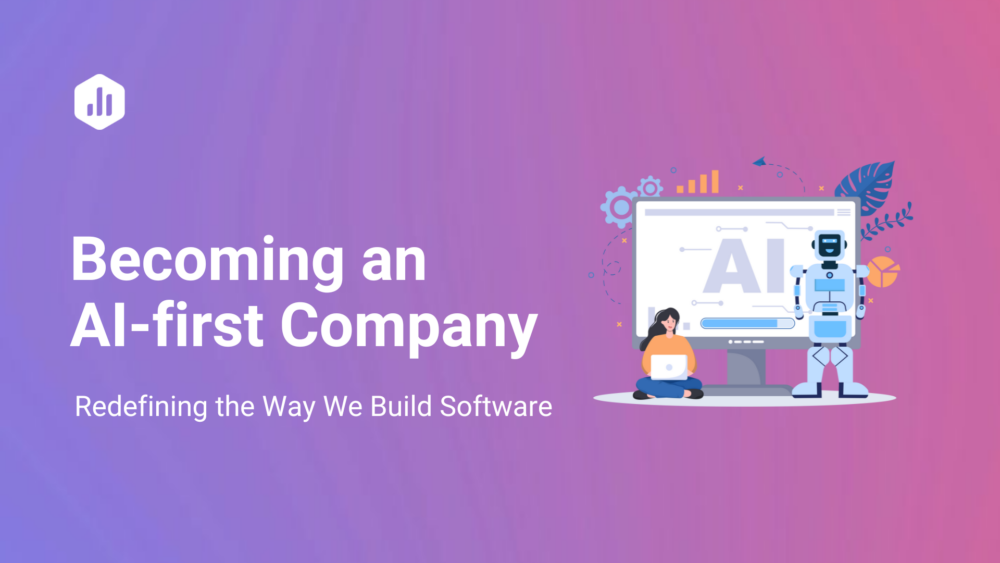Table of contents
Each year, businesses spend millions of dollars with external consultants and agencies in an effort to understand how they can improve, grow and ultimately succeed.
While bringing in an outside expert may be the right path for some, the truth is that, more often than not, the answers are already right in front of you. Your own data can tell you everything you need to know. By making sure that data and analytics are the backbone of your culture, you’ll be able to make better decisions, avoid nasty surprises, and adapt quickly if things go wrong. After all, when it comes to achieving your objectives and maximizing ROI, there is without doubt strength in numbers (pun intended).
Here’s why it’s on everyone to not only bear Analytics in mind, but to understand how working with data can shape your company’s overall performance:
Decision Making
Data-driven decisions give your company the best chance at achieving your goals.
I think it’s pretty hard to argue with that, right?
Yet somehow it’s still far too easy to make gut-based decisions rather than fact-based ones. But if everyone is on board analytically, then there’s far less guesswork being done across the business.
Do you remember “Moneyball: The Art of Winning an Unfair Game,” Michael Lewis’ book that chronicled the Oakland Athletics’ evidence-based approach to baseball and business? The A’s discovered that certain statistics in the game were overvalued, meaning other teams were likely overpaying their players relative to actual results. By critically examining the data and making changes to their philosophy, the A’s were able to rise to the top of their division in 2002 with a payroll that was nearly 300% smaller than the elite teams, like the New York Yankees.
With the President, GM, manager, trainers, scouting staff and even other Oakland players on board with the analytically-driven plan, the team was able to optimize for the players and stats that really mattered, ultimately making all the difference in their success.
Agility
Fates change pretty quickly in the world of business.
Don’t believe me?
You may remember what I like to refer to as “Coupongate” — when J.C. Penney eliminated coupons in favor of “everyday low prices” in 2010. Things had been going pretty well for J.C. Penney, but former Apple exec Ron Johnson was brought in to amp it up. And eliminating coupons was a central part of his plan. Now of course I don’t know exactly how this decision was made, but it certainly seems to me like there was must have been a gaping hole where J.C. Penney’s data driven insights should have been. Because boy, did customers hate it. And I mean really hate it.
Johnson could have avoided this debacle if he had leveraged data to really understand customer behavior and recognized that the existing model, where customers felt like they were getting a break on products they purchased using the coupons and promotions offered, was working!
Instead, he removed the incentives that customers were drawn to and in turn, destroyed most of the goodwill that J.C. Penney had built up during its rise in the retail industry. And at that point, there was simply no denying what the data (and customers) were saying.
By the end of Q2 2015, J.C. Penney had gotten it’s data-act together, reintroduced some of its old systems, and found a way to claw its way back into retail relevancy. However, their experience goes to show if data is central to an organization’s thinking, it’s much easier to adapt to changing circumstances – and it might not cost you 5 years of progress!
Collaboration Creates Cohesion
How can one truly put their best foot forward from a Marketing perspective if they don’t fully grasp what’s going on with the Sales component of an organization?
And what’s more, does it make any sense to create silos by withholding data that can help teams work together?
I’m guessing your answers to the questions above are “they can’t” and “it doesn’t,” respectively. (Or at least I’d hope so!)
Having the entire team on the same page analytically translates into transparency and collaboration, making it easier to hit those goals. By using data as the lingua franca in the organization, teams can create shared understanding and ownership that starts to break down those inevitable departmental silos. That means more clearly defined challenges, more collaborative problem solving, and more well-rounded solutions.
Avoiding Surprises
Your total number of new leads are down almost 40% compared to last month… surprise!
Nobody wants to hear those words — or any like them.
So make sure you never do by making analytics a part of everyone’s day-to-day in an effort to guard against downtrends or potential business pitfalls. Data should inspire action!
Having the ability to predict and protect is crucial when determining everything from corporate strategy to tactical execution. And creating a data-literate culture, where your people are taught not only what to look for in the numbers, but also what they mean, can help you avoid surprises that could hurt your business.
In most businesses, being able to count on everyone to do their part and then some isn’t just a goal anymore – it’s where the bar is set to begin with! And your business can only benefit from more people being intimately tied to the data that keeps you running. The closer your team’s relationship is to what the numbers mean, the stronger the investment they’ll have in your business.
How does your company integrate data into day-to-day decision making? Is it everyone’s job to be involved in analytics where you work? What are some other ways that data and analytics could be implemented in your industry? Let us by tweeting us @databoxHQ.






![How to Improve Agency Operational Efficiency [Insights from 40+ Agencies]](https://cdnwebsite.databox.com/wp-content/uploads/2023/09/14052320/agency-client-collaboration-1000x563.png)




